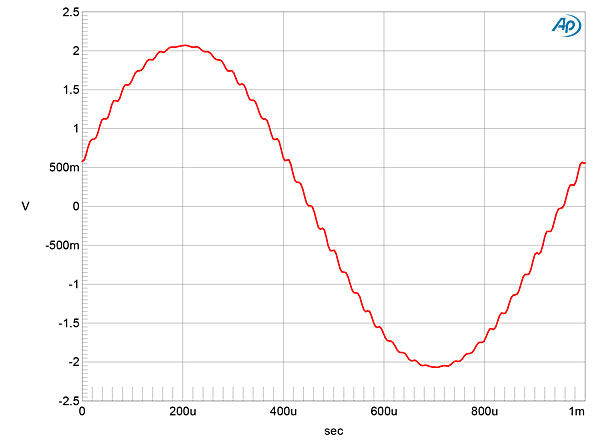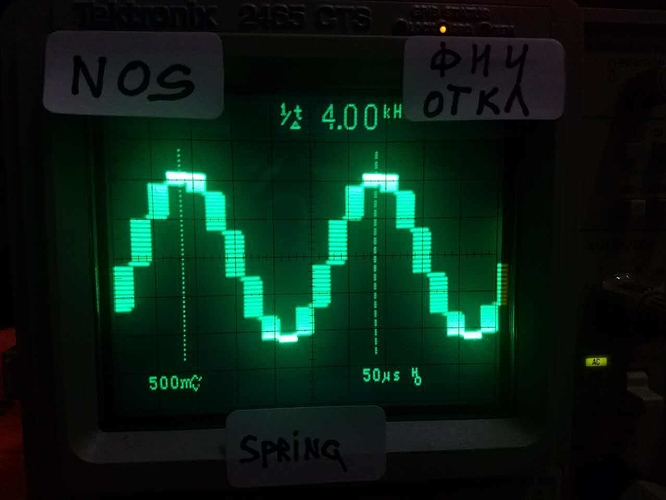True, I didn't. It is what I get from the reviewers. Comparison with R2R DAC's is avoided.
From the design point of view it is not a true R2R ladder, but a segmented architecture. Similar to the chip-DACs used in Shiit Bifrost 2 and up. TDA1541 is an example, it could never compete against a true R2R which was PCM63 or the latest 1702/4. Segmented architecture is not so well defined for a dynamic response, but it measure better. Holo Audio makes it even worse, as for the marketting purpose they added a compensation ladder in parallel. Once again, purely for better measurements. And a Stereophile tests show that there is some bit manipulation in software which affects linearity of a sinewave output in NOS mode. Really
strange machine. Here is:
Fig.2 HoloAudio May, NOS mode, waveform of 1kHz sinewave at 0dBFS, 16-bit data.
It looks like a six MB bits are randomised, creating such stepping behaviour of a single sweep shot.






















